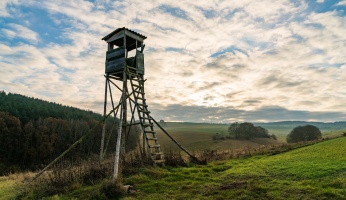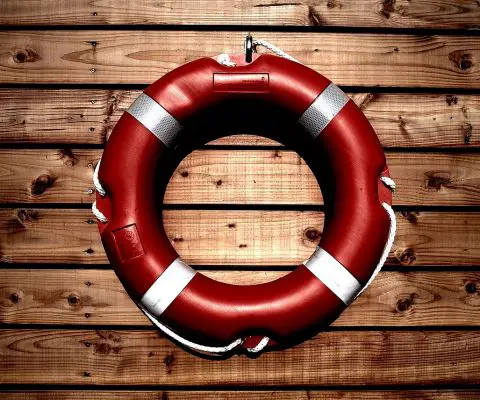Things to Do Right After Shooting a Deer
 Things to Do Right After Shooting a Deer
thegearhunt.com
Things to Do Right After Shooting a Deer
thegearhunt.com
A large number of hunters are quite meticulous about the initial stages of hunting. While hunters get in-depth lessons on targeting a deer with the kill-shot, they are often behind the trend when it comes to the post-hunting process. The quality of venison is of utmost importance as poor processing will dampen the meal quality, when it is time to eat. This is fundamental if you desire to get the best of it.
What you need to do:
Be Sure it’s dead
Ensuring that your supposed kill is actually dead is extremely important. This is necessary as it may have sustained a minor hit leading to its weakness. Under such circumstance, getting extremely close to the deer is considered dangerous. Numerous stories have made the rounds of injuries and deaths of deer hunters who failed to ascertain the state of the animal after shooting a deer.
Process It

After taking your shot at the deer, the next important step is field dressing. It is important to note from the onset that there is another step before this one: be sure that the animal is actually dead. This may seem overemphasized, but it is important because a whole lot of people are always in a rush to reach out for the deer’s throat immediately after shooting a deer, neglecting the fact that it might still have some life left in it.
Experiences have shown that a buck is capable of inflicting severe damage if by any chance it lives after getting shot. So, do not risk slitting its throat if a possibility of it being alive exists. Shoot at it again from close proximity, as this guarantees your safety.
Also worth reading best hunting rifles
Field dressing is a process in which the internal organs are taken out, and this is expected to be done as soon as possible before moving the deer. During this procedure, a blunt knife should not be used, and care should be taken to avoid puncturing the innards. A hole in the bladder or bowels of the animal can cause the venison to smell bad and then spoil it.
As much as you can, take off its windpipe, liver, lungs, bowels, and heart, but if possible, do not slit the throat from the outside. Any windpipe left unremoved will be cut out when the deer has hung appropriately. It is noteworthy that carelessly exposing the insides of the buck at this point will increase the chances of messing its meat while hauling it into a vehicle. Also, make sure you avoid deer hair getting in contact with the meat than necessary.
Take It Away

Lifting a deer onto a truck, and driving off to one’s destination seems to be the most convenient and efficient means of transporting it. However, this is often unachievable because of proximity.
A lot of times, deer hunters will have to drag their kill from the field or woods to the haulage point. If your only chance is to pull it out of the fields, you must make use of a tarp to prevent ground contact. For maximum benefit, ensure you do everything possible to minimize dirt contamination in order for the quality to be preserved.
Hanging the Game
Once you get to the camp with the deer, hang it immediately, and be sure it is not in contact with the ground. You might want to hang it with its head up or otherwise. Either way, hanging it is the most important thing, because it aids the flow of residual blood out of the animal. Next procedure would be to cut through its ribs using a hack saw, and then pry open its cavity with a piece of wood or something workable. Due to the insulating nature of fur, it is advisable that you rip the deer’s hide off it. This will aid the temperature of the meat to stabilize early.

Having reached this stage, some hunters deem it right to wash dirt and debris off the venison. Although rinsing the meat with water will make it clean and cool rapidly, but it can also raise its moisture content. This accelerates microbial activity, which in turn increases the chances of tainting the meat.
Get It Aged
Air temperature is a determinant of the length of time that you will have to hang your deer. Temperatures below 40 degrees are suitable for aging your deer for about a week. When it goes above 40 degrees, the tainting process will be accelerated. If warmer temperatures become evident, the aging process should be a few days.
Cutting It for Preservation

After aging for a suitable number of days, you can start butchering and processing the meat. You might decide to cut the meat yourself or use the help of a professional. If the cutting is done by you, it should be executed with a clear plan of what to do with the meat, and this should be in a clean environment.
Now, you should perceive a good smell from the carcass. Make sure that your cutting equipment is clean and sharp; else you will have bone pieces trapped within the meat.
Also, do not be astounded by the size of meat obtained from the deer. You should expect only about 30 percent of the animal’s weight as useable meat. Based on this percentage yield, a 200-pound deer will produce 60 pounds of meat together with shards of bones in it, after cutting and processing.
Conclusion
The above is how it goes, the simplest and most relevant facts required for processing a deer once it is killed. In case you desire further specifics, they are available in more elaborate publications.
Venison is regarded as one of the meats with the best taste and the least fat content known to man. Although this is not a general opinion, a larger percentage of deer hunters would most probably agree with it, just as I do, I hope that you do enjoy you deer feast whenever you get to have one.















